The Ultimate Guide to Beef Meat
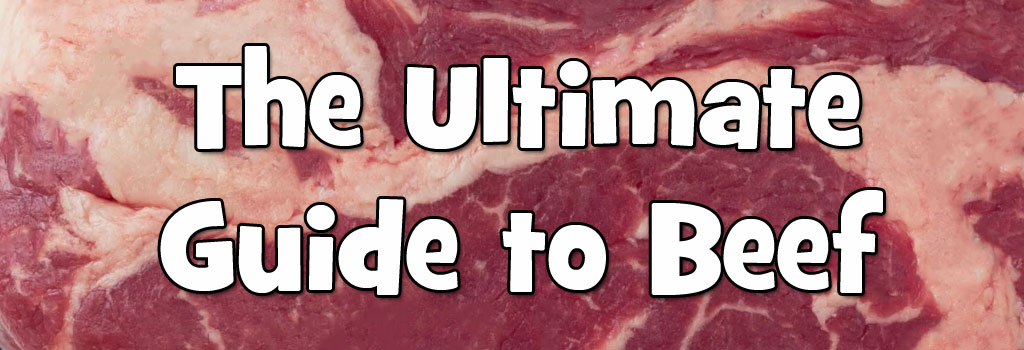
It comes from cattle and is one of the most widely consumed meats in the world. It appears on the menus of fast food joints and high-class restaurants alike. Among other things, it can be roasted, fried, flame grilled, boiled, braised or minced. Human beings have been eating it since prehistoric times.
That’s right, we’re talking about beef.
Beef is one of the tastiest and most versatile meats there is. It appears as a main ingredient in countless recipes worldwide, having been steadily refined and enjoyed according to the palettes and cultures of billions of people over thousands of years.
So consider this your gourmet guide to all things beefy. Let’s tuck in.
What Exactly is Beef Meat
Beef, of course, is flesh taken from mature cattle (as opposed to veal, which is taken from calves). Beef can be taken from all breeds of cattle, but certain breeds are produced specifically because they provide the highest quality meat.
Beef is graded according to the cut, quality and age of the meat (among other guidelines) and is priced and sold accordingly. Younger beef is considered more desirable than its older counterpart, mainly because the meat is that much more tender and succulent.
It is an irony, then, that ageing the meat actually improves its flavour. Typically, a cow carcass will be stored in a cold environment and hung upside down for around two weeks after slaughter. This causes changes in the muscle tissue that ultimately improve the texture and flavour of the meat.
…As far as I know, the meat is not improved at all by having Rocky come round and punch the sh*t out of it.
Organic beef is usually sold alongside regular beef, but generally costs a good deal more. It is beef from an animal that was not given hormone injections (which are used to make the animal bigger and more muscular). Also, in order to qualify as ‘organic’, the animal would have to eat organic feed and be given space to live a relatively comfortable life before being slaughtered.
Generally speaking, organic beef is a healthier and more ethical choice, which justifies the greater price tag. There are strict sanctions about what qualifies beef as ‘organic’ and what does not, although these may vary from country to country.
Beef is consumed all over the world, but is less commonly eaten in Southeast Asia and Africa. It is a dietary staple (and therefore hugely popular) in America, Australia, New Zealand and most of Europe.
Contrary to popular belief, even India has a thriving beef market, despite Hindus viewing cows as sacred animals.
In fact, India is the world’s second biggest beef exporter. In case you’re wondering, Brazil is the biggest, as it produces 1.8 million metric tons of the stuff every year.
Beef is rich in protein and iron, as well as various vitamins and minerals. As a result, beef eaten in moderation can form part of a healthy and balanced diet (more on this later).
Cuts of Beef Guide
In this section, we’ll take a brief look at the different types of beef available, including what part of the animal it comes from, how best to prepare it and what to look for when buying.
Before we get started, here are a few buying tips that apply to most, if not all, of the cuts mentioned below.
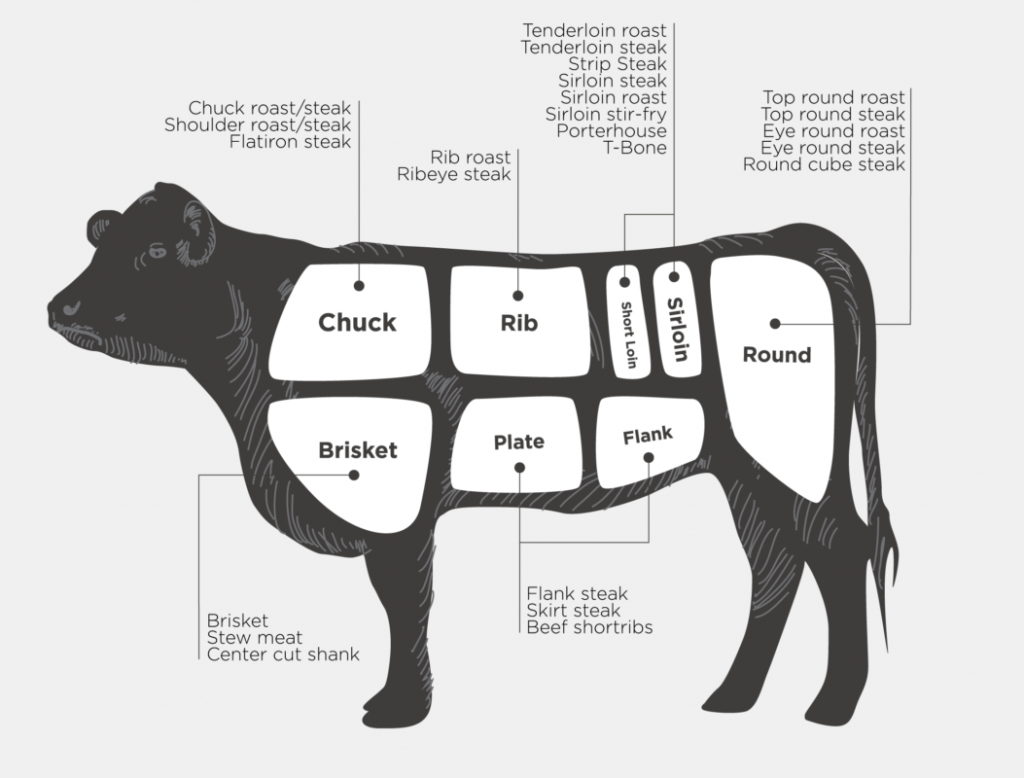
1) The colour of beef is important. Avoid buying meat that appears to be bright pink, as this means it isn’t fresh. A dark red colour means that the meat is from a more heavily worked muscle and will therefore be denser and have a stronger flavour. Grey patches can indicate freezer burn, which is harmless, but they can also indicate that the meat has turned. If you’ve frozen fresh meat and it comes out looking grey, worry not. If the meat is grey in-store, it is probably best avoided.
2) Raw beef changes colour due to the presence of proteins called myoglobins. Darker reds, slight purple patches and even iridescent shimmers can all occur because of these proteins.
3) Signs of spoilage in raw beef include stickiness, grey-brown discolouration and a clear film or ‘goo’ developing on the surface of the meat. Also, raw beef may not smell especially appetizing, but it should not smell bad. If it sets off a gag reflex, it has gone off and should under no circumstances be ingested.
4) The greater amount of fat you can find, the more flavour you will get.
5) When beef is younger, the bones are softer and reddish in colour. When the beef is older; the bones are harder and white coloured.
6) The best cuts of steak usually come from the short loin.
And now, we move on to the cuts themselves…
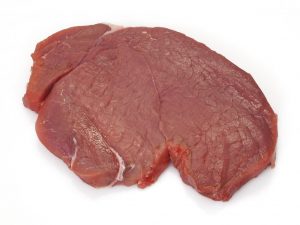
Braising Steak – Also known as ‘chuck steak’, braising steak comes from the shoulders of the cow. Because the shoulders are almost constantly in use during the animal’s life, this meat tends to be quite tough. It can be tenderised during the cooking process, however. Braising steak is often sold pre-diced and so works well in casseroles, stews, soups and pies – basically anything that requires a lengthy cooking time.
Brisket – Brisket is taken from the chest area between the shoulders of the cow. This is an often used area of muscle and so tends to be quite well developed. It features a high concentration of fat, which is marbled throughout and adds to the flavour. Brisket is usually best when slow roasted to the point that it comes apart. As a result, it is often used for sandwich fillers such as corned beef and pastrami. This cut is pretty much made for a slow cooker.
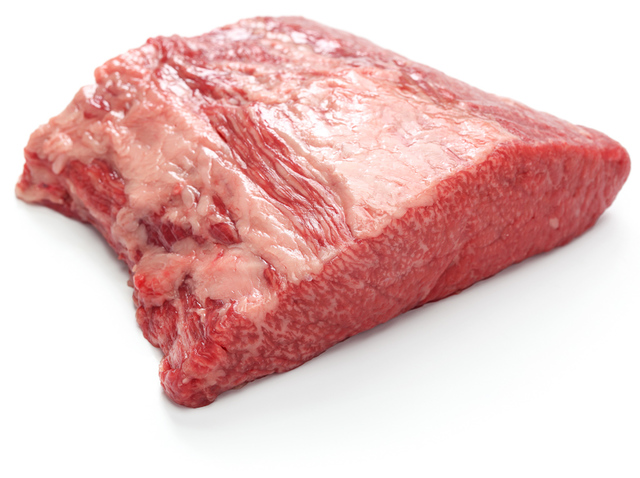
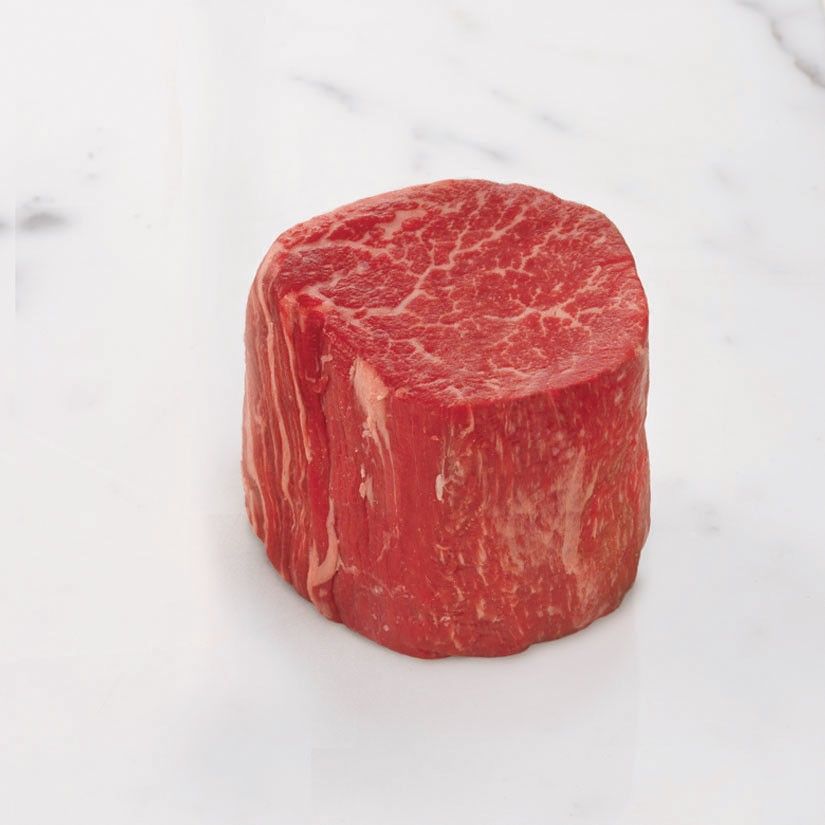
Fillet Steak – If you’re anything like me, even the words ‘fillet steak’ (or even ‘filet mignon’, if you’re feeling a bit fancier) will make you start to feel hungry. Fillet is a very expensive cut of meat and so has come to be linked with celebrations and special occasions, as it is usually regarded as a bit of a treat. It comes from the lower middle of the cow’s back, an area that is far less in use than the animal’s shoulders, chest or legs. As a result, the meat is very much leaner and softer than most other cuts. Fillet steak should be cooked as quickly as possible, as it dries out easily. Of course, it does not need to be well cooked in order to be thoroughly enjoyable. Fillet steak is best fried or flame grilled.
Rib-Eye Steak – As the name suggests, rib-eye comes from just above the cow’s ribs. Like fillet, it’s an area that doesn’t work especially hard in comparison to the other body parts. The meat is tender, but fattier than fillet steak. Whereas fillet steak needs to be cooked quickly, with rib-eye steak, it is better to take your time and cook it until it is at least medium rare.
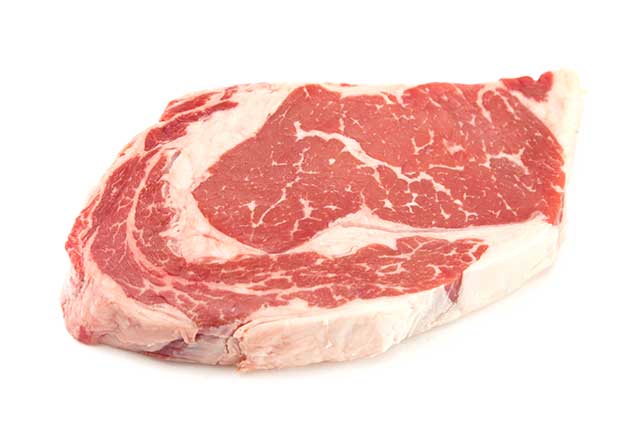
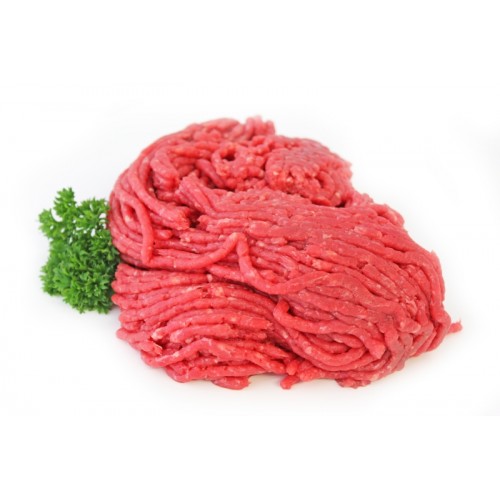
Ground Beef/Mince – Technically, there IS a difference between ground beef and mince, so I’m cheating a little by lumping them in together. Minced beef is beef that has been cut or diced very finely by either a sharp knife or a food processor. Ground beef is beef that has been put through a meat grinder. Mince, as it is commonly known, is used for all manner of recipes, from shepherd’s pie and savoury mince, to chilli con carne, burritos and spaghetti bolognaise, as well as many, many others. Minced beef is versatile, affordable and very easy to cook. Graded according to its fat content, mince in the UK is usually listed as ‘low fat’, ‘lean’ or ‘premium’, with each being used for different things. Mince with more fat, for example, makes better burgers, while low fat mince is healthier, but not quite as tasty (Sigh – isn’t that always the way?)
Sirloin Steak – The only steak tasty enough to be knighted (as far as I know), Sirloin steak comes from the area where the fillet ends and the rib begins. According to legend, King James I (or VI, if you happen to be a Scot) so enjoyed eating this cut of meat for dinner one night that he knighted it, proclaiming it be known forever as ‘Sir Loin’. Some stories ascribe this (frankly, mad) action to Henry VIII or Elizabeth I. In reality, the word probably comes from the French ‘surloynge’ (literally ‘over loin’). This makes infinitely more sense, as we get other meat-related words from French (‘gammon’ for example, comes from ‘jambon’, meaning ‘ham’). Though it can be fatty (and therefore must be cooked for longer than, say fillet steak) Sirloin steak is great when roasted. However, it must be regularly basted to keep from drying out.
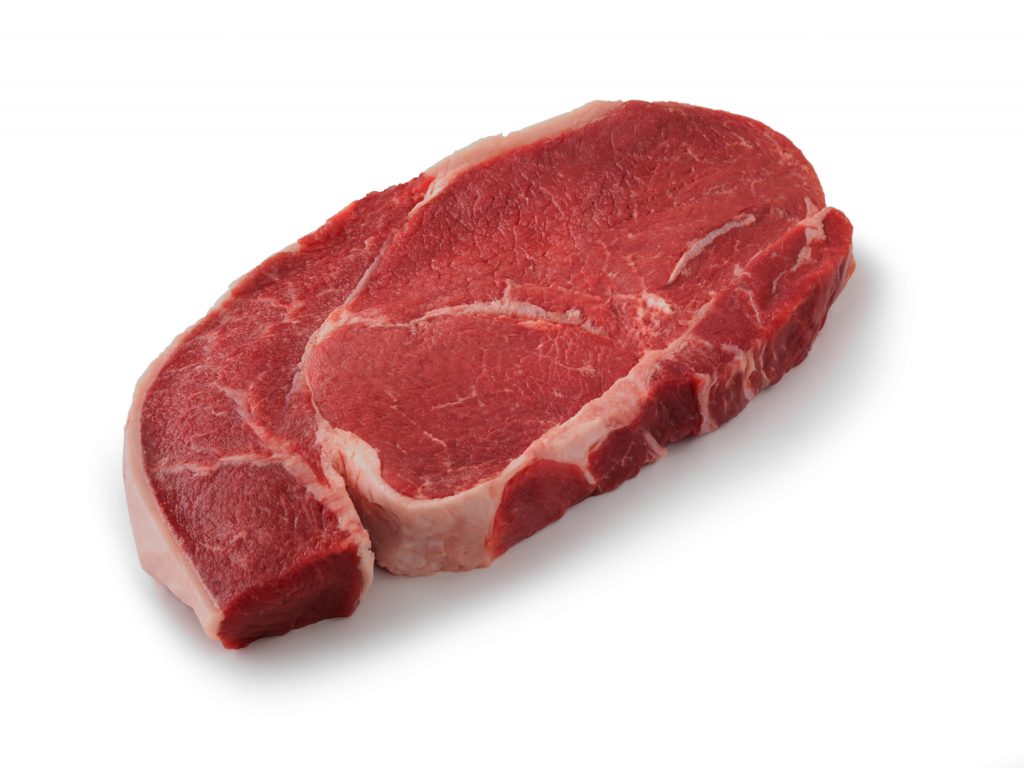
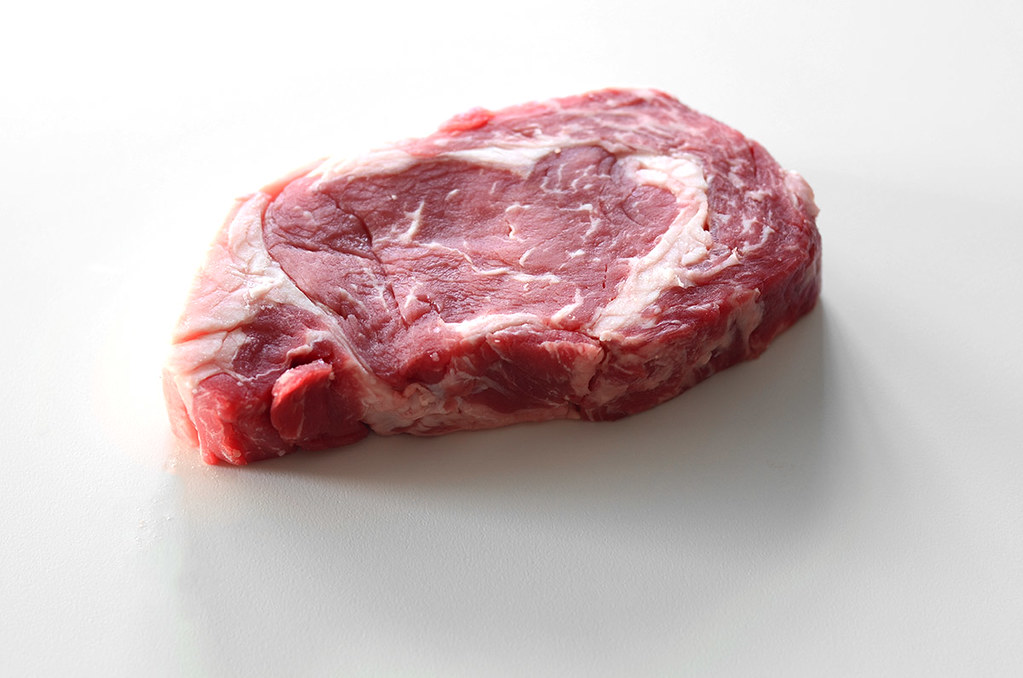
Rump Steak – This cut comes from, uh, the cow’s backside. Don’t let that put you off, however, as rump steak is intensely flavourful. Because the cow uses its hind muscles quite a lot, the rump steak is a tougher cut than, say, a fillet or rib-eye. However, it is still tender enough to be cooked and served like a fillet. In addition to being flame grilled or fried in the usual way, rump steak is also used in kebabs, marinades and stir-fries, as it is a very porous and absorbent cut.
T-Bone – Aside from being George Costanza’s dream nickname (as well as the stage name of at least one great bluesman), the name ‘T-Bone’ refers to the ‘T’ shaped bone that this cut is served on. On one side of this steak, you will find fillet meat and on the other side is sirloin. This gives the T-bone a lot of variety. Fillet and sirloin cook at different speeds, which means that one side of a T-bone steak is usually slightly rarer than the other. T-bone steak is bold and flavourful and does not require much seasoning as a result.
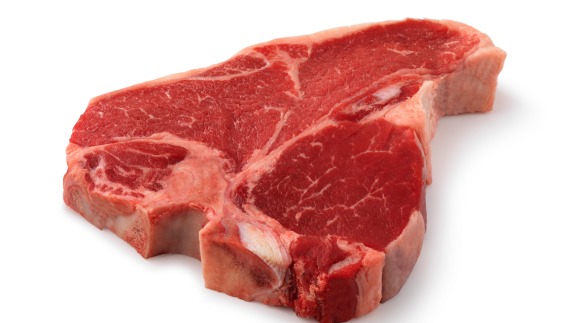
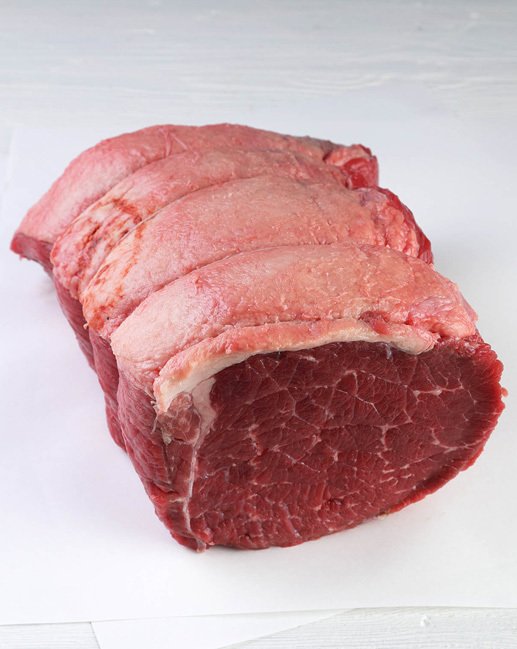
Silverside – This meat comes from just above the animal’s leg. It gets its name from the coating of silvery, slightly iridescent colouring that covers one side of the joint. Silverside is used to make roast beef, as well as corned beef, but can also be sliced into lean steaks. It is easy to prepare, though it must be kept moist in order to prevent it from drying out.
Topside – Topside comes from the inner thigh of the cow. As a result, a thick layer of fat accompanies this cut. This is useful as it can be used to baste the meat. Perhaps surprisingly, topside beef is actually quite lean. It roasts extremely easily and is both tasty and versatile. Topside is commonly served as part of the great British Sunday roast.
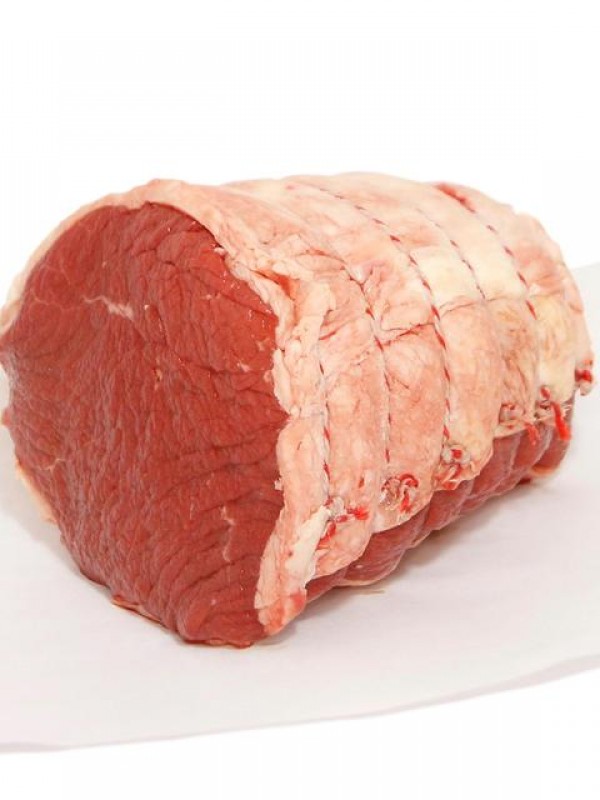
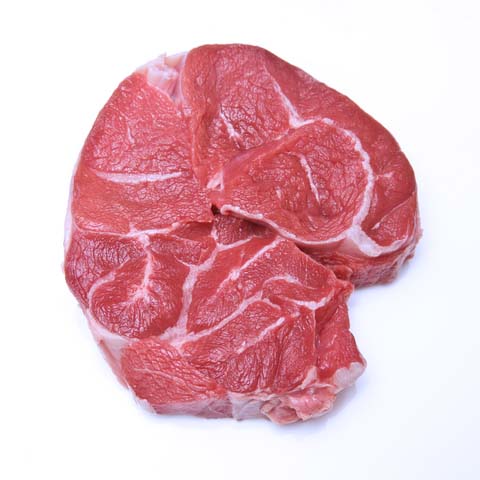
Shin – Shin steak (not to be confused with ‘Shin Godzilla’, which is much thicker and tastier, but also considerably more radioactive) is cheap meat that comes from the animal’s foreleg. Shin meat is sometimes sold as ‘stewing steak’, as this meat is very fatty and gristly. However, when braised or slow cooked for long enough, shin beef is actually very tasty indeed. The fat and connective tissue (which can be hard and almost inedible when grilled or fried) totally breaks down when braised, creating an explosion of flavour that stretches to every part of a stew or casserole. With a little extra effort, this cut can therefore provide great meals, as well as excellent value for money.
Skirt – Taken from around the underbelly area, skirt can be quite a tough customer to cook well. The meat is lean to the point of thin, and is usually covered with a thin membrane (hence the ‘skirt’, I guess). This should be carefully removed before cooking. In general, skirt should be cooked either very quickly in a pan or very slowly in a liquid. Skirt is often used in Mexican cooking, as well as Cornish pasties and sometimes pies.
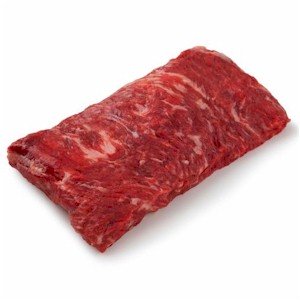
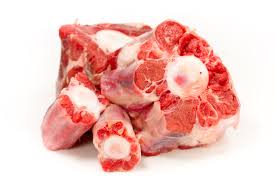
Oxtail – Oxtail is, well, the tail of the animal. This may seem surprising, seeing as the tail is largely made from tough muscle fibre and bone, but when stewed on a low heat for an extended period, oxtail offers a great deal of flavour. Oxtail is definitely recommended for those who really enjoy the natural flavour of beef, as it has quite a strong taste. Accordingly, it is very popular in soup.
Ox Cheek – Ox cheek comes from the cheek of the cow and is currently ‘flavour of the month’ in a number of posh restaurants around Britain and Europe. As anyone who has been to a farm will tell you, cows spend a lot of time chewing, so it’s no wonder that the meat from the cheeks is as tender and succulent as it is. It has a lot of flavour, and so benefits from slow cooking with minimal seasoning. It can also be fried, flame grilled or barbequed to great effect, though the meat should be rested a while before eating if it is barbequed.
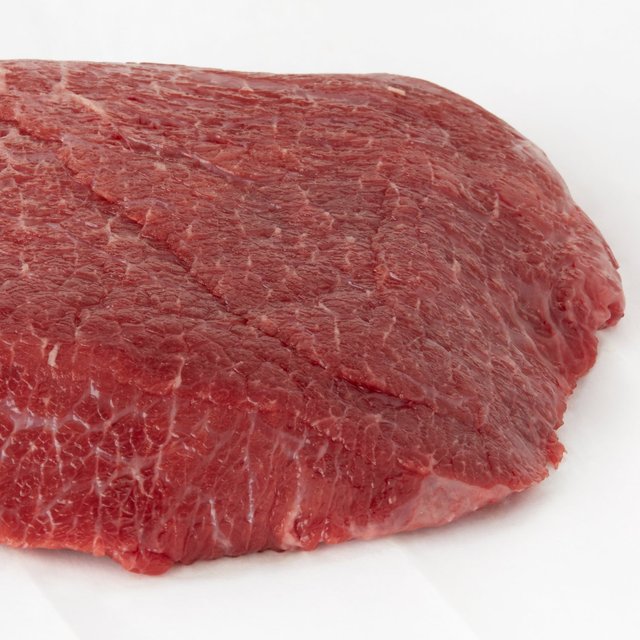
Flank – This is the cut from the cow’s abdominal muscles. Flank is probably best enjoyed following an overnight marinade and a quick trip to barbecue country. It can also be roasted or fried. Also really good in the Slow cooker.
Porterhouse Steak – A Porterhouse is essentially a T-bone steak, except that it is generally a larger cut and has a greater portion of fillet.
Onglet – A rarer cut also known as ‘hanger steak’, onglet is not commonly sold in supermarkets, but can usually be obtained by ‘chewing the fat’ with your local butcher. It must be cooked gently and never overcooked. Onglet responds well to barbeque, but must only be turned once per cut. In essence, onglet is similar to fillet steak, only a bit more finicky to cook well. It is worth persevering with, however.
Flavours That Compliment Beef
Like any meat, the taste of beef is complimented, sometimes even improved, by the addition of other ingredients. It might be the vegetables served on the side, the tang of a tasty sauce or the herbs and spices used to season the meat, but whatever it is, you’ll know it when you taste it. Generally, these complimentary flavours are punchy enough to hold their own alongside beef’s already strong taste.
We tend to use the words ‘taste’ and ‘flavour’ interchangeably. However, this is not accurate. The word ‘taste’ simply describes how something, well, tastes (i.e. is it sweet, bitter, salty etc). ‘Flavour’ as a term encompasses other aspects of the eating experience as well as taste, such as the smell, the texture and/or how juicy or dry the food is.
…Now THERE’S food for thought.
The thinner, more porous cuts of beef can be well seasoned with a marinade. It is also possible to create a rub (where seasonings are rubbed onto raw beef that is then cooked – this is especially good for barbeques). You might even try making a nice glaze (also good for barbeque).
What follows is a list of other foods that work well with beef.
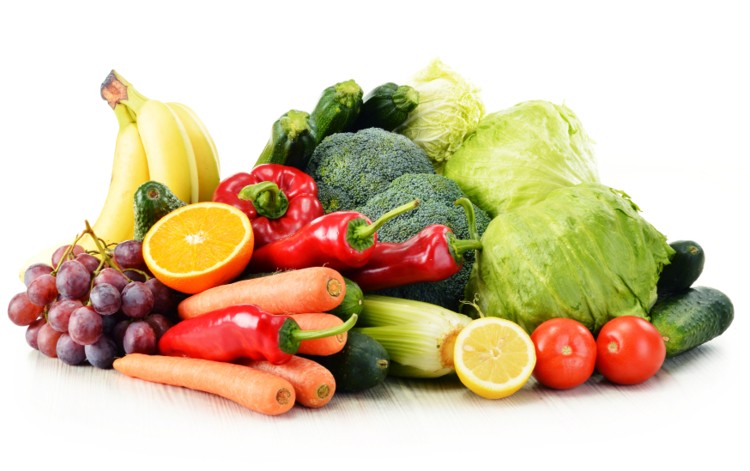
Vegetables and Fruit with Beef
- Potatoes (especially sauté or jacket potatoes served with steak).
- Tomatoes (especially when fried, grilled or barbequed).
- Garlic (especially if crushed into a paste and rubbed into cuts in the raw steak).
- Red or green bell peppers (roasted or fried).
- Carrots (boiled, steamed, roasted or fried – it’s all good).
- Mushrooms (fry ‘em in garlic butter – yummy!)
- Onions (especially when used as seasoning or added to casseroles).
- Leek (add it to beef stews, casseroles and soups).
- Bacon Lardons, like in beef bourguignon and other beef stews
- Jalapeño peppers (and other chillis, add a little fire to your Mexican dishes).
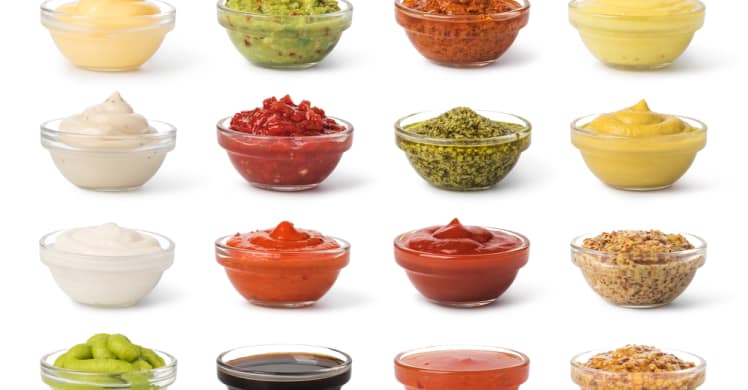
Condiments for Beef Meat
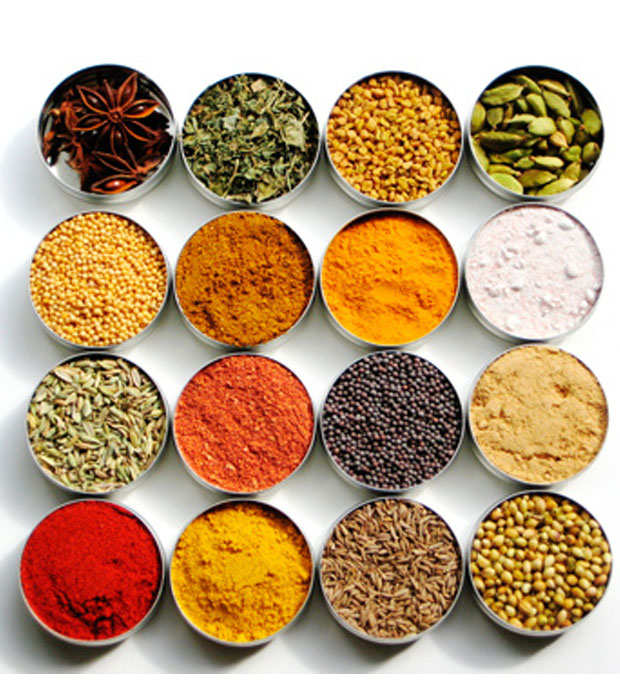
Seasoning with Beef Meat
Others
Methods of Cooking Beef
With meat that is as multi-faceted and versatile as beef, it should come as no surprise that it can be cooked in a wide variety of ways. Each of the following methods will affect the texture and flavour of the meat itself and each has cuts that are best suited to it.

Boiling – Boiling beef is a lot like boiling gammon steak. The fat should be removed before the beef is placed into the water. Add a small amount of salt to the water, then bring to the boil for as long as is recommended. Boiling is not the most flavour-friendly method of cooking beef, but it can help to keep the joint nice and moist, provided it is not overcooked.
Braising – Braised beef is great for fans of moist, tender meat. To braise beef, simply brown the meat off before cooking it in a small amount of liquid at low heat for a long time. Using this method, a cheap cut of meat can become a veritable banquet!
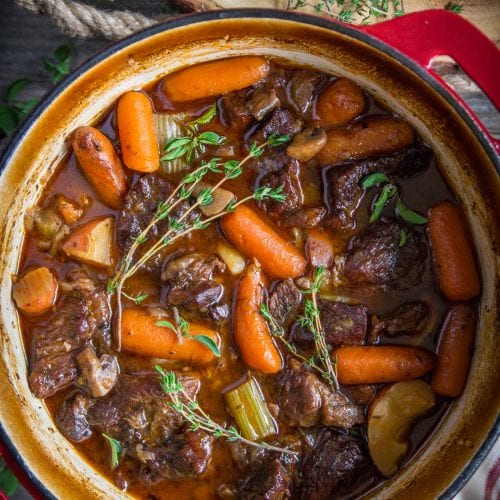
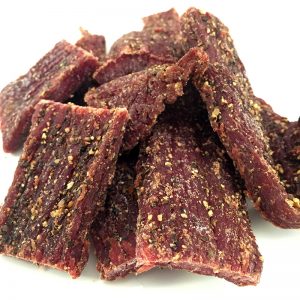
Drying – Dried beef, also known as ‘jerky’ (although the term refers to any dried meat) is created when meat is slowly dehydrated, usually in an oven. It has a tough, chewy consistency, but it definitely does make for a tasty, protein-heavy snack.
Grilling/Broiling – The difference between grilling and broiling refers mainly to the position of the heat source. To grill something means that the heat is below the food, whereas broiling requires the heat to be above the food. In either instance, simply place the meat (seasoned, marinated or simply as it is) on or under the heat and cook until ready to eat. For finer cuts of meat, refrain from turning regularly.
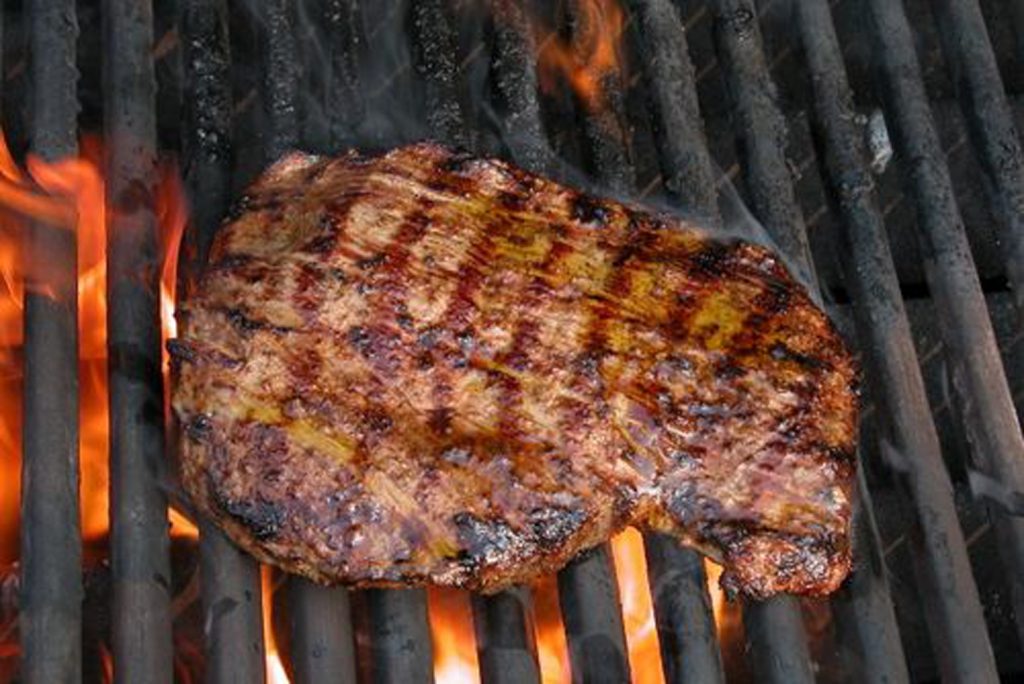
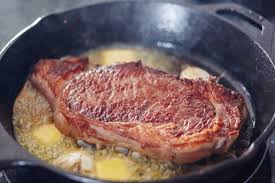
Frying – To fry a steak, simply place it in a frying pan and cook until ready to eat. To fry mince, cook in oil or fat until meat is properly sealed.
Pan Searing – Pan searing actually refers to heating the surface of the meat (in a pan, in case that wasn’t obvious) until it achieves a nice, crisp, golden brown colour on all sides. This enhances the flavour of the meat, as well as creating a tasty sediment that you can use in a gravy, sauce or jus. Typically, you would pan sear larger cuts of meet, cooking the outside rather than the whole thing. This makes it distinct from frying.
Barbequing – Technically, barbequing COULD come under the category of grilling, although cooking meat over a barbeque adds significantly to the flavour via the presence of smoke (be it coals, certain types of wood or whatever). This cooking process is sometimes referred to as ‘smoking’. Grilled meat and barbequed meat seldom taste the same; hence barbequing getting its own section.
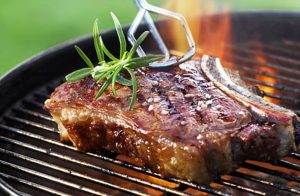
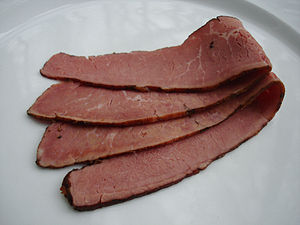
Preserving – Beef can also be pickled. This process involves placing natural preservatives into a container along with some beef. This preserves the meat so that it lasts longer, perfect examples of preserved beef is pastrami and corned beef.
Roasting – Roast beef is one of the world’s great flavours. We like it so much that we sell it as sandwich meat, and even flavour our crisps to resemble it. To roast a joint of beef, cook the meat (on or off the bone, it’s entirely up to you) for an extended period on a high heat until the outside is caramelised. After that, simply turn the heat down for the rest of the allotted time. Do not remove the fat before cooking, as, if left attached, it will baste the meat and improve the flavour during the roasting process.
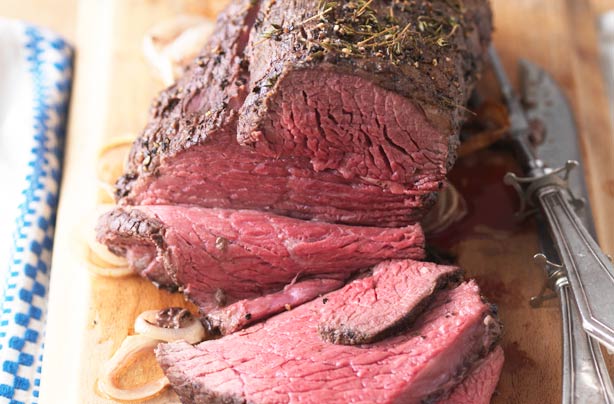
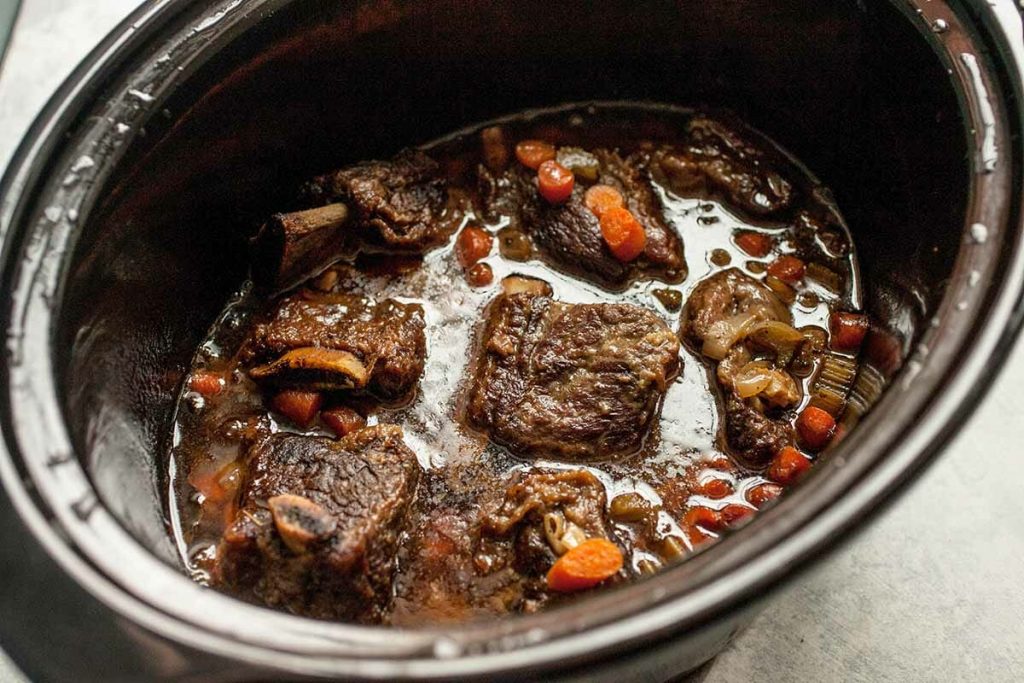
Slow Cooking – Using a slow cooker, the tougher, cheaper cuts of beef can be rendered almost as delicious as the finest filet mignon. Once heated slowly and consistently over an extended period, the fat and connective tissue starts to break down, unleashing the full flavour of the thicker, more muscular cuts of beef. This flavour transfers to all other ingredients, thereby creating a wonderful meal. This is a cheap and convenient way of producing delicious stews, casseroles and soups.
Stewing – A great way to stave off the cold, stewing beef is similar to boiling, except that to stew the meat usually involves placing chopped or diced beef into water that is flavoured, contains other ingredients (such as seasoning and root vegetables) and is intended to be eaten along with the meat rather than tipped away. Beef stew can be eaten by itself, or added to a bed of rice or boiled potatoes in order to really create a great winter meal.
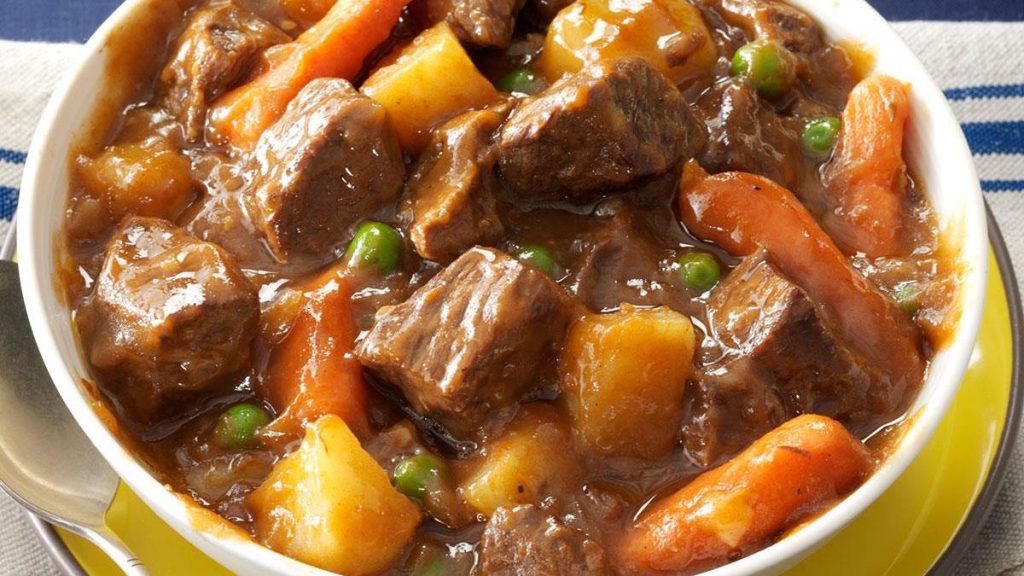
Nutritional Benefits of Beef
Over the past couple of decades, the fashionable view has been that chicken, turkey and fish are healthy, acceptable meats to eat, whereas beef is fatty – and therefore bad for you.
For a long time, it seems that, when it came to beef, many people believe that Red meats are bad for you and you should avoid them at all costs
Today, the thinking is actually quite different. Yes, beef DOES have a higher fat content than chicken, turkey or fish. However, almost half the fat in beef is a monounsaturated fat called oleic acid – a type of fat that is actually good for your heart (and is also found in olive oil). In truth, most of the saturated fat in beef actually decreases your risk of a heart attack because it lowers bad cholesterol (LDL) and increases good cholesterol (HDL).
Of course, if you insist on eating bacon burgers with cheese for dinner every night, you’re going to have problems. However beef as a meat is actually a lot better for you than people used to think.
So let’s take a look at what’s in every bite of beef, shall we?

Protein – Like all meats, beef is a great source of protein. A piece of lean, cooked beef is likely to be between 26% or 27% protein. Because of the similarities between humans and other mammals, most meats have an amino acid profile that is virtually identical to that of our own muscles. Meat helps to build muscle mess for this very reason.
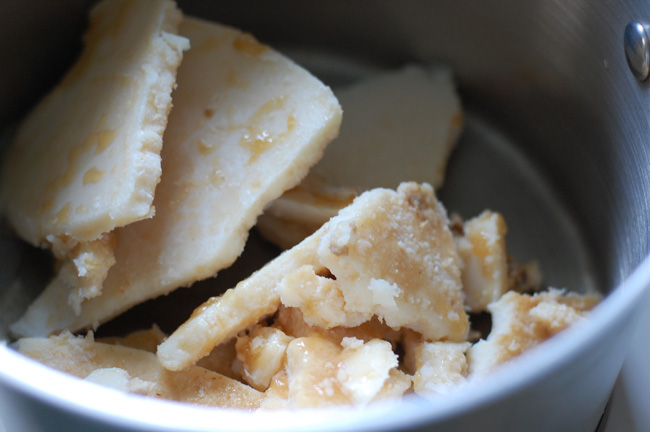
Fat – Fat increases the calorie count of beef enormously (one reason why it isn’t usually recommended to those trying to lose weight). However, the amount of fat in the meal often depends on multiple factors, including what kind of beef you’re eating and how it has been prepared. If the beef is processed (such as beef sausage, corned beef or other snack foods), the fat content is likely to be fairly high. A piece of lean beef, however, might consist of anywhere between 5% and 10% fat. Beef contains a naturally occurring ruminant trans fat known as conjugated linoleic acid (CLA for short), which is actually conducive to weight loss, as well as having several other health benefits.

Vitamins & Minerals – Like all animal-derived meats, beef is rich in vitamins and minerals. Beef is a great source of vitamin B12, which is essential for maintaining a healthy nervous system, among other things. Beef is also rich in Vitamin B3, which helps to prevent heart disease. You will also find a lot of vitamin B6 in your beef. This aids your metabolism.
Minerals found in beef include zinc (for growth), iron (which helps prevent anaemia, aids the metabolism and helps blood and oxygen to be efficiently transported throughout the body), selenium (which can protect against heart disease) and phosphorus (aiding body growth and general upkeep).
So it seems that the naysayers were mistaken. Beef is actually highly nutritious.
is Beef Harmful to your Health?
Beef, as we have seen, actually offers many health benefits, among them, maintenance of muscle mass, an increase in energy (beef, like fish, contains taurine, an amino acid commonly used in energy drinks), the ability to exercise more (beef contains the compound carnosine, which is very important to the function of muscles) and the inclusion of various beneficial vitamins and minerals into your diet. It can also prevent anaemia and help to prevent heart disease.
Having said/written that, it has been shown that people who eat meat are, on average, less likely to exercise and more likely to gain weight than people who don’t (though this doesn’t necessarily show that meat is to blame for this, just that some people are more proactive with their diets than others).
In addition, some studies have linked processed beef (and other processed meats) to heart disease, while others have linked the consumption of all meats with heart disease. Further studies, however, have found no correlation at all between meat consumption and heart disease.
Saturated fats, such as the kind found in beef, have been linked to heart disease on a number of occasions. However this data is far from being 100% conclusive and is in fact hotly contested.
In recent years, it has been suggested that eating high quantities of meat may cause colon cancer. Again, scientific opinion is divided, because not all studies prove a direct correlation. Still, it is probably worth knowing. Meat components such as heme iron, heterocyclic amines and outside substances (such as smoke) used in the cooking and preparation of meat may, in fact, be causing cancer.
Other health risks of beef include food poisoning, beef tapeworm (extremely rare in the Western world) and iron overload.
Our best advice would be to stick to the old adage ‘all things in moderation’. Limit your intake of the fattier cuts or of processed beef, especially if you’re concerned about heart disease. Focus on leaner cuts of meat as part of a balanced diet and exercise as regularly as you can. You should also try to go for grass-fed beef over grain-fed, if you can afford to do so.
Watch what you eat, when you eat and how much you eat. In this context, eating beef has far more health benefits than it does drawbacks.
Buying, Storing & Cooking Beef
The quality of beef is measured by, among other things, its lean to fat ratio. However, both high and low quality meats have their benefits. Beef with a high fat content will be very tasty (especially when stewed or slow cooked), whereas lean meat is generally healthier, with a better protein to fat ratio.
We touched on this earlier, but the quality of raw beef is usually assessed by the colour. Deep, dark reds are good; purples and greys are not so good. A good cut of beef should have consistent colouring throughout.
Marbling is also something to look out for. The term ‘marbling’ refers to small streaks of fat found within the meat. This will add to the flavour, as well as the moistness and/or juiciness of the meat when cooked.
Smell is also important. Look, it’s a chunk of dead animal that’s been hanging upside down in a meat locker for a fortnight, so it probably won’t smell as good as cooked meat, but raw meat (or any kind) shouldn’t smell bad. Raw beef has a subtle, fresh smell that is neither pleasant nor especially unpleasant. If it smells bad, avoid eating it. It’s that simple.
Juiciness is important too. If a slice of beef retains water well, it is considered to be a superior cut, as this will mean it absorbs other ingredients better and will generally be juicier and tastier to eat.
Tenderness is also considered a highly desirable quality in beef. Tender meat comes from a variety of factors. Younger animals bear softer meat, for example. Tenderness is also determined by what cut of meat you’re buying, this is because the cow uses certain muscles more than others. Shoulder meat, for example, tends to be tougher, while meat from the lower back is softer and therefore more highly prized.
Other factors that contribute to the quality of the beef are the animal’s diet and level of exercise, as well as how much preparation the meat has already undergone (is it just a chunk of meat, or has it been aged, smoked, seasoned or preserved in some way?).
Here are a few beef-based ‘do’s and don’ts’
- Always buy your meat from a place you trust. Your local butcher is a great place to get high quality meat from a knowledgeable source. If the meat is truly local, you can probably find out everything you need to know there and then. Supermarket meat can vary in quality according to price, but is usually safe to eat. Be sure to check the ‘best before’ date before making any purchase.
- Meat sold in supermarkets or at a reputable butcher’s shop will have been properly cleaned, prepared and stored before being sold to you. Avoid other sources of meat, especially if it happens to be cheap.
- When packing or transporting raw meat, always pack it in bags separate from foods like fruit, vegetables and bread. If the packaging of the meat splits even a little, it can cover these ‘ready to eat’ foods with bacteria-laden meat juices.
- Refrigerate all meat (but that’s a given, surely?).
- Try to keep meat in sealed containers at the bottom of the fridge (this will stop meat juices from dripping onto other foodstuffs).
- Always keep cooked meat separate from raw meat.
- Don’t eat meat after its ‘use by’ date.
- Raw meat can only be frozen once. Thawed meat can however be cooked thoroughly and then frozen again.
- Cooked meat can only be reheated once.
- If you use a microwave to defrost your meat, be sure to consume it within 24 hours.
- Beefsteaks and whole joints of beef may be eaten rare, which means that they are only cooked on the outside. This is because the harmful bacteria only live on the outer layers of the meat, while the rest is safe to eat. Other cuts of beef (in particular processed beef such as mince or ground beef) must be cooked until sealed. Always check that fully cooked meat is piping hot throughout before serving.
- Raw beef will last between 3 and 5 days in the refrigerator. Any longer than that and you’re pushing you’re luck.
- Always wash your hands before and after handling raw meat.
Raw meat, of any kind, must be handled carefully and responsibly. Always ensure that the meat is clean and fresh before cooking.
Generally speaking, the cultivation of good habits such as keeping antibacterial soap and a hand towel (don’t dry your hands on a teatowel, because those are for drying up clean stuff) by the kitchen sink, not leaving uncovered food out for flies (or other nasties) to get at and double checking that all meat is thoroughly cooked, should be enough to keep your kitchen safe from food poisoning.
Well, that about concludes our ultimate (and exhaustive!) guide to beef. Before we go, however, let’s tip our collective hats in the direction of the humble cow, the animal from which all beef originates.
Not only do these magnificent creatures feed us with meat and dairy, they also help clothe us with leather (which is also used for couches, sporting equipment like footballs and lots more). Their tallow (fat) is used for wax products like paper and crayons, as well as lubricants, soap, shaving cream and other assorted cosmetics. The gelatin made from their bodies creates sweets such as marshmallows, gummies and jelly. Keratin, made from a cow’s hooves, is used in fire extinguishers, saving lives.
But that’s not all. Fatty acids from cows are used in perfumes, mouthwash, toothpaste and deodorant. Elsewhere, the tyres on your car and the asphalt that lines the roads probably contain cow by-products. We even create art with paintbrushes made from cow’s hair (though listed as ‘camel hair’, this usually means ‘cow hair, in the same way that when phone companies say ‘unlimited minutes’ they in fact mean ‘limited to a specific amount’ – sorry, pet peeve).
Cows are truly amazing and they contribute so much to our lives, including beef, the delicious and nutritious meat that this feature was written to celebrate.
